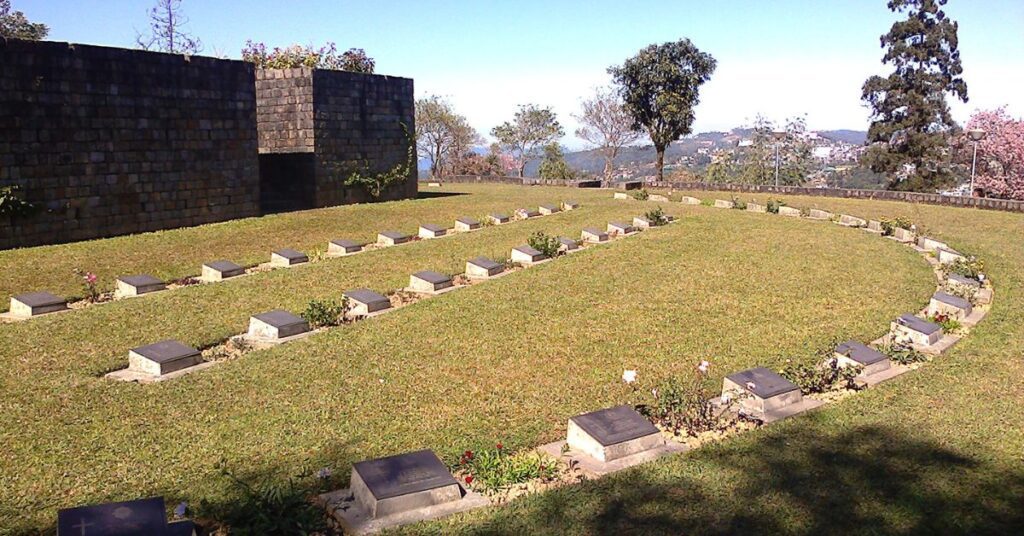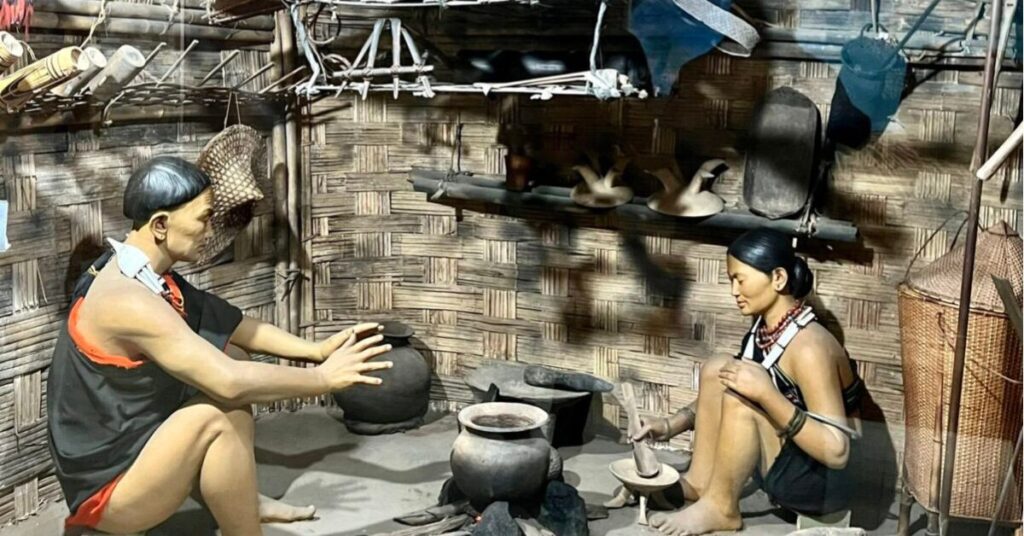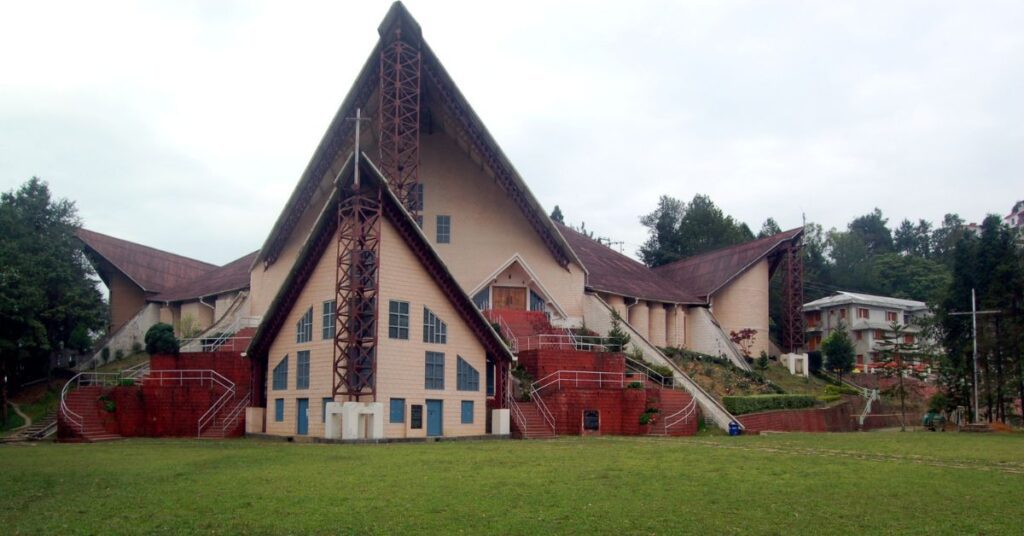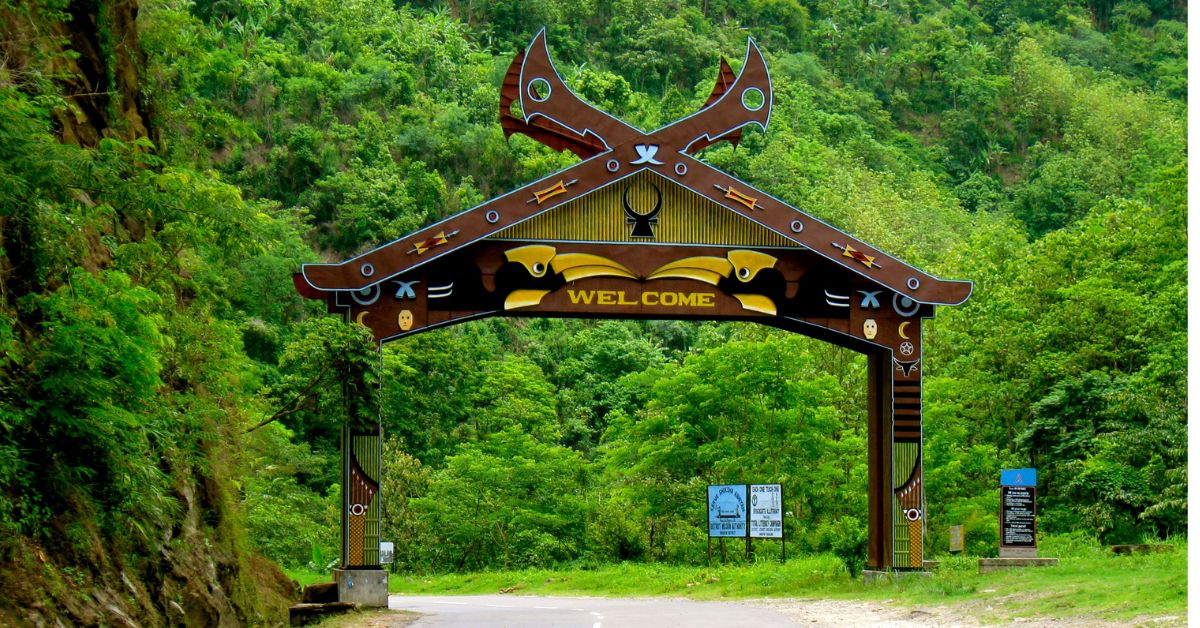Nestled in the rolling hills of Nagaland, Kohima is a city bursting with culture and history. As Nagaland’s capital, it blends the traditions of the Naga people with the energy of modern life. This unique mix makes it a fascinating place to visit, whether you’re looking for adventure or a deeper understanding of the region.
Kohima’s cool climate and beautiful scenery are the perfect backdrop for exploring the city. It’s not just a jumping-off point for Nagaland’s stunning landscapes, but a destination in itself. History buffs will appreciate the Kohima War Cemetery, a moving tribute to World War II soldiers. For a taste of local life, wander the bustling markets, try some delicious Naga food, and join in the vibrant festivals that celebrate the rich traditions of the Naga tribes.
How tot reach:
- By Air: The closest airport is Dimapur Airport (DMU), located about 74 kilometers away. Taxis and private cabs are readily available to take you to Kohima in 2-3 hours, depending on traffic.
- By Train: Dimapur Railway Station is the nearest major station. From there, taxis and shared cabs can whisk you to Kohima in 2-3 hours.
- By Road:
- From Guwahati: If you’re coming from Guwahati, Assam (about 330 kilometers away), you can take a bus or hire a taxi. The journey typically takes 8-10 hours.
- Buses: Several private and state-run buses operate between Guwahati and Kohima, offering a budget-friendly option.
- Shared Cabs: Shared cabs are a popular choice for traveling between Dimapur and Kohima. They can be faster and more affordable than buses.
- From Guwahati: If you’re coming from Guwahati, Assam (about 330 kilometers away), you can take a bus or hire a taxi. The journey typically takes 8-10 hours.
best time to visit:
(October to March):
- Weather: This is widely considered the peak season. Enjoy pleasant weather with temperatures ranging from 10°C to 25°C (50°F to 77°F), perfect for sightseeing and outdoor adventures.
- Activities: Embrace trekking, explore historical sites, or soak up the city’s vibrant energy. This period also coincides with cultural festivals, making it a great time to immerse yourself in local traditions.
(April to June):
- Weather: Temperatures rise slightly, ranging from 15°C to 30°C (59°F to 86°F). While warmer, it’s still manageable compared to other regions.
- Activities: Explore Kohima before the monsoon sets in. Lush landscapes and blooming flowers create a captivating atmosphere. Early April is ideal for catching the beginning of the blooming season nearby.
(July to September):
- Weather: Expect heavy rainfall and high humidity. Temperatures remain between 15°C and 25°C (59°F and 77°F), but frequent showers and occasional landslides can be disruptive.
- Activities: While outdoor activities might be limited, the monsoon offers a unique chance to experience Kohima’s verdant landscapes and the tranquil beauty of the rain-soaked environment. Be prepared for potential travel disruptions and muddy trails.
(December):
- Hornbill Festival: If experiencing local culture is your priority, plan your trip around the Hornbill Festival (December 1st to 10th). This annual extravaganza showcases everything Naga – dance, music, food, and exquisite crafts.
attractions:
Kohima War Cemetery:

The Kohima War Cemetery is a moving reminder of the bravery of soldiers who fought in World War II. Located just outside Kohima, this peaceful place honors over 1,420 soldiers, mostly British and Indian, who died defending the area from Japanese forces.
The cemetery grounds are beautifully kept, with neat rows of graves, memorials, and a large cross. It’s a quiet and respectful place, with lush green grass and colorful flowers adding a touch of peace.
Nagaland State Museum:

Step back in time and explore the rich tapestry of Nagaland at the Nagaland State Museum in Kohima. This treasure trove houses a fascinating collection that brings the diverse Naga tribes and their traditions to life.
Imagine rows of traditional weapons, ceremonial objects, and intricately woven textiles – each piece a testament to the skill and artistic heritage of the Naga people. The museum lets you delve deeper with detailed displays of tribal clothing, tools used by ancestors, and even items used in traditional ceremonies.
Kohima Cathedral (Cathedral of Jesus Christ):

Kohima Cathedral, also known as the Cathedral of Jesus Christ, isn’t your typical church. This majestic building in Nagaland’s capital blends Christian faith with local tradition, creating a truly unique landmark.
One of the largest churches in Northeast India, the cathedral stuns with its architectural fusion. Look closely and you’ll see echoes of Naga design alongside Christian influences. Inside, beautiful stained-glass windows cast colorful light, while intricate woodwork and a grand altar create a peaceful and reverent atmosphere.
local experiences:
Shop Local: Immerse yourself in the lively Naga Bazaar, Kohima’s main market. Here, you can find a treasure trove of local crafts, textiles, spices, and fresh produce – perfect souvenirs or ingredients for your culinary adventures.
Tantalize Your Taste Buds: Savor the unique flavors of Naga cuisine! Sample dishes like smoked pork with bamboo shoot or fish stew, and quench your thirst with traditional rice beer at local eateries or restaurants.
Festival Frenzy: Time your trip for the Hornbill Festival (December) and witness a vibrant celebration of Naga culture. Immerse yourself in traditional dance performances, music, food stalls, and even tribal rituals.
Village Vibes: Explore nearby villages like Khonoma. Witness traditional Naga architecture, learn about their successful community-based conservation efforts, and connect with the friendly locals.
Craft Your Own Naga Art: Get hands-on! Join workshops or demonstrations to learn the art of bamboo weaving, pottery, or intricate beadwork – skills passed down for generations by the Naga people.
A Cultural Journey: Witness or even participate in local ceremonies and rituals. These traditions offer a glimpse into the rich cultural tapestry of the Naga tribes.
Support Local Artisans: Discover hidden gems at local artisan shops. Explore handcrafted textiles, stunning jewelry, and intricate wood carvings – each piece a reflection of Naga heritage.
Rhythm and Hues: Immerse yourself in the vibrant world of Naga music and dance. These traditional performances are an integral part of local celebrations and cultural events, capturing the heart and soul of the region.
History Comes Alive: Walk through historical sites like the Kohima War Cemetery and the Nagaland State Museum. Gain a deeper understanding of the region’s fascinating past and rich cultural heritage.
Connect with the Community: Participate in local initiatives or cultural exchange programs. This is a fantastic way to gain a deeper understanding of local customs, traditions, and the warm spirit of the Naga people.
travel tips:
- Inner Line Permit (ILP): Don’t forget this! You can apply online or at designated offices in nearby states. Foreign travelers might also need to register with the Foreigner Registration Office.
- Weather Warrior: Pack layers for the cool season and rain gear for the monsoon. Remember, it’s a mountain town, so nights can be chilly.
- Travel Light: Local transport might have limited space. Pack versatile clothing and sturdy walking shoes for exploring.
- Book Ahead: Especially during peak seasons or festivals, pre-book taxis or shared cabs from Dimapur to Kohima to avoid delays.
- Hydration Hero: Stick to bottled or purified water. Be cautious with street food, especially if you have a sensitive stomach. Opt for well-cooked meals.
- Respectful Traveler: Dress modestly and ask permission before taking photos of people or private property. Be mindful of local customs and ceremonies.
- Limited Connectivity: Mobile network coverage can be patchy. Inform loved ones about your travel plans and carry a portable charger.
- While some places accept cards, many local markets and shops deal primarily in cash. Carry enough Indian Rupees (INR) for your expenses.
- Check Before You Go: Research any required vaccinations and health advisories. Carry a first-aid kit and consult a healthcare provider if needed.
- Leave No Trace: Dispose of waste properly, avoid disturbing wildlife, and support local conservation efforts. Be a responsible tourist!
- Book Early: Especially during festivals or peak seasons, secure your stay by booking accommodations in advance.
- Engaging a Guide: Consider hiring a local guide, especially for cultural sites and hidden gems. They can offer valuable insights and enrich your experience.
conclusion
Unveiling Nagaland’s gem, Kohima transcends its capital city title. History and vibrant culture intertwine here, offering a captivating adventure for every traveler. Xplro.com, your adventure partner, unlocks its secrets.
Immerse yourself in the somber serenity of the Kohima War Cemetery, then dive into the bustling energy of Naga Bazaar overflowing with local crafts and fresh produce. Nature lovers can trek through the Dzükou Valley, a landscape bursting with blooms (check our detailed Dzükou Valley guide!), or conquer Japfu Peak’s panoramic vistas. Witness the unique Naga way of life in Khonoma Village, a model of sustainable living, and immerse yourself in colorful festivals bursting with dance, music, and age-old customs. Savor the delectable flavors of Naga cuisine.
faqs
When is the ideal time to visit Kohima?
- The optimal time to explore Kohima is from October to March. During this period, the weather is pleasantly cool, with temperatures ranging from 10°C to 25°C (50°F to 77°F), making it perfect for sightseeing and outdoor activities.
What are the travel options to reach Kohima?
- You can reach Kohima by air, train, or road. The nearest airport is Dimapur Airport, about 74 km away. You can take a taxi or cab from Dimapur to Kohima. Dimapur Railway Station is also close, with taxis or shared cabs available for the journey. Buses and shared cabs run from Guwahati to Kohima as well.
Is a permit required to visit Kohima?
- Yes, visitors need an Inner Line Permit (ILP) to enter Nagaland. The ILP can be applied for online or at designated offices in neighboring states. Foreign tourists may also need to register with the Foreigner Registration Office.
What should I pack for a trip to Kohima?
- Pack clothing suitable for varying temperatures, including warm layers for cooler evenings. If traveling during the monsoon season, bring rain gear. Comfortable walking shoes, a hat, sunscreen, and a basic first-aid kit are also recommended.
Is Kohima a safe destination for tourists?
- Kohima is generally safe for travelers. However, it’s wise to adhere to local guidelines, travel in groups or with a guide, and be cautious during the monsoon season due to potential road hazards.
What are the top attractions in Kohima?
- Notable attractions include the Kohima War Cemetery, Nagaland State Museum, Kohima Cathedral, Dzükou Valley, Japfu Peak, Khonoma Village, and Naga Bazaar. Each location offers a unique insight into the city’s history, culture, and natural beauty.
Are there places to stay in Kohima?
- Yes, Kohima offers various accommodations, including hotels, guesthouses, and homestays. Options range from budget to luxury, and it’s best to book ahead, particularly during peak travel times or festivals.
Can I easily find local food in Kohima?
- Yes, Kohima has numerous eateries serving traditional Naga cuisine. Local dishes include smoked pork, bamboo shoot preparations, and rice beer. Local markets and restaurants provide a variety of authentic dining options.
What are the transportation options within Kohima?
- Local transportation includes taxis, auto-rickshaws, and rented scooters. For getting around the city and nearby areas, hiring a local taxi or guide can be convenient. Public transport is limited, so plan your travel accordingly.
What activities are available in Kohima aside from sightseeing?
- Beyond sightseeing, visitors can explore local markets, participate in cultural festivals, visit traditional villages, join craft workshops, and interact with local artisans. Outdoor activities such as trekking and hiking are also popular.
How reliable is mobile network coverage in Kohima?
- Mobile network coverage in Kohima can be inconsistent, particularly in remote areas. Carry a portable charger and inform family or friends about potential connectivity issues to stay connected.
What cultural practices should I observe while in Kohima?
- When visiting Kohima, dress modestly, ask permission before taking photos of people or private property, and respect local customs and traditions. Engage respectfully with the community and support eco-friendly tourism practices.






